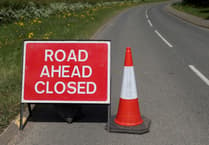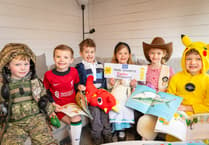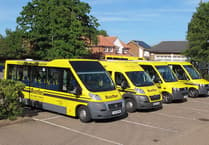WOKING was once the epicentre of the hybridisation and propagation of plants that thrived on the sandy soils.
These were sold to garden lovers throughout the UK and exported around the world.
Family run businesses could be found in Knaphill, Goldsworth, Horsell, Chobham, Bisley, Bagshot, Worplesdon, and St John’s.
The latter was the original home of Jackman’s nursery, which became famous for hybridising clematis.
William Jackman founded his 50-acre nursery in 1810. In 1830, two of his four sons, George and Henry took over the business. However, their partnership did not last long, as Henry soon quit.
Other members of the Jackman family were also nurserymen in and around Woking, but it was George’s son (also called George) whose horticultural skills produced some spectacular varieties of clematis.

Father and son began breeding different varieties of clematis in 1858 and from their first batch of 300 seedlings the variety ‘Clematis Jackmanii’ evolved. In 1863 it was awarded a first-class certificate by the Royal Horticultural Society’s (RHS) floral committee.
Still available to this day, the RHS describe it as: “A free-flowering, medium-sized, vigorous, deciduous climber. Flowers to 10cm in width in late summer, with four textured rich velvety violet-purple sepals and greenish-cream anthers. Flowers from early to late summer.”
Although nurserymen have always been in competition with each other regarding sales, there are many times when they help each other, such as when a grower has issues with pollinating and propagation.
Back in 1872, George Jackman II, collaborated with Thomas Moore to publish the first book devoted to clematis plants. It was dedicated to Princess Mary, whose daughter, also Mary, became Queen Consort of George V.
The Jackman family was not only involved in growing plants. In the 1881 census, George Jackman II was also listed as a brick-maker and a farmer, employing 55 men and five boys.
The next generation to run the business was Arthur George in 1887, who, in 1898, was joined by his brother Percy. During the First World War the nursery grew corn, supplying the nation’s vital food needs.

By 1923, it was in the hands of George Rowland Jackman, in partnership with his uncle Percy. A catalogue from that time lists 36 varieties of clematis the business had reared. Plants with names of a local connection included ‘Belle of Woking’, ‘Countess of Lovelace’, ‘Mrs George Jackman’, ‘Countess of Onslow’, and of course, ‘Jackmanii’.
Dwarf conifers, trees and shrubs were also grown as the business slowly changed from the wholesale to the retail market. George Rowland was not so much interested in clematis hybridising, but avidly hunted down plants from the wild and rescuing old varieties that he would then grow on and offer for sale. Examples being a type of herb known by the name rue he found growing by a cottage in Ottershaw, and a sturdy example of a mountain ash tree he found while driving through Horsell!
In 1960, George Rowland relocated the nursery to a site off the A320 at Mayford. In 1967, he sold the nursery to David McNeill, who kept the Jackman name and later opened a garden centre on the site.
My thanks to The Lightbox for allowing me to reproduce the Jackman catalogue, handbook and vintage photograph of the nursery from its archive collection.
If you have some memories or old pictures relating to the Woking area, call me, David Rose, on 01483 838960, or drop a line to the News & Mail.
David Rose is a local historian and writer who specialises in what he calls “the history within living memory” of people, places and events in the west Surrey area covering towns such as Woking and Guildford. He collects old photos and memorabilia relating to the area and the subject, and regularly gives illustrated local history talks to groups and societies. For enquiries and bookings please phone or email him at: [email protected]




